The Atacama Desert is evocative, a scenery of coloured rocky landscapes, blue sky and emptiness. It is cold and dry and we were eager to head east across northern Argentina to the Iguazú Falls. We set off driving one of the most beautiful drives in the world from San Pedro Chile to Purmamarca, Argentina a distance of approximately 500km.
Enlarge
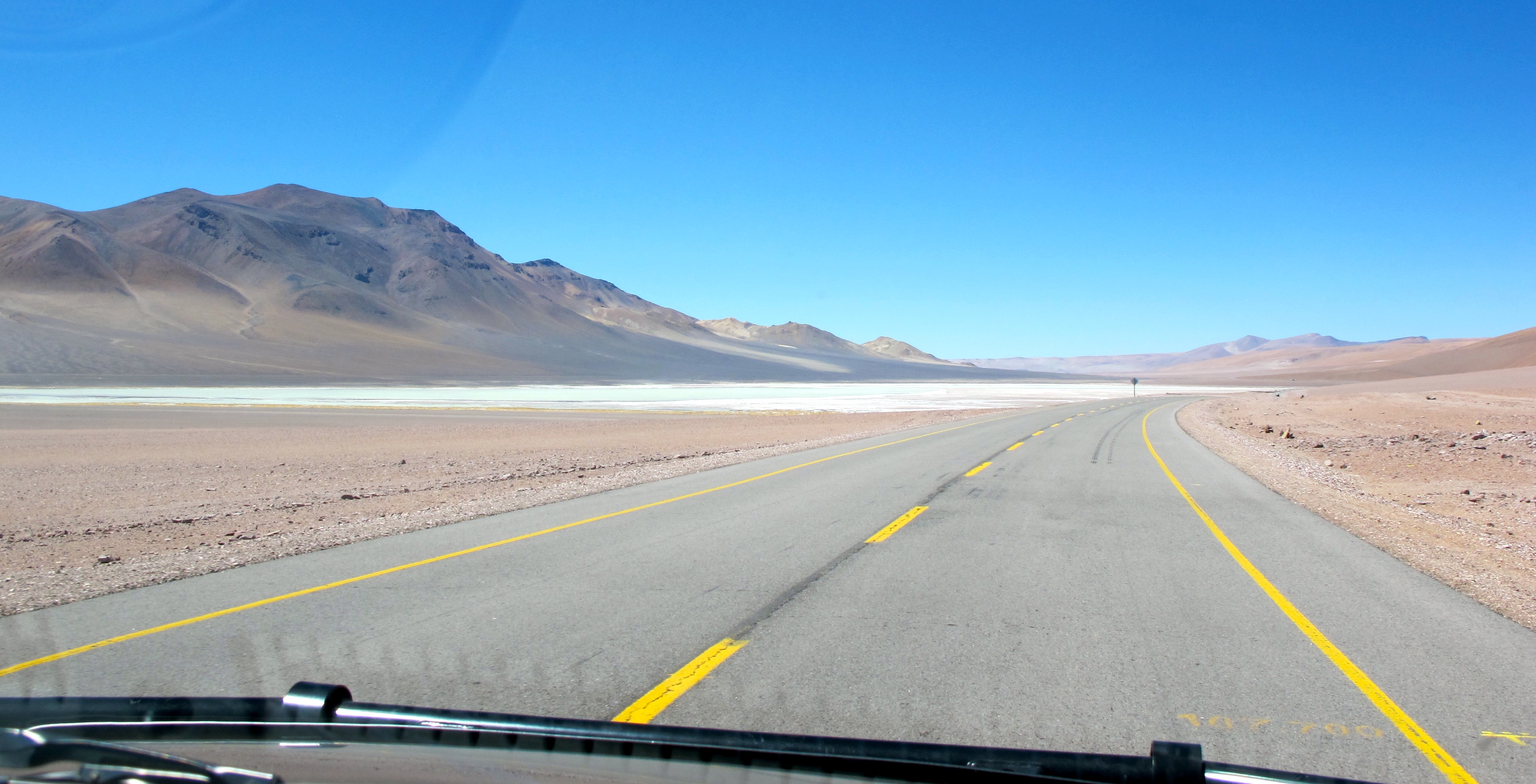
Adventurouspirits
Enlarge

Adventurouspirits
Enlarge

Adventurouspirits
There was a heightened sense of excitement in the truck as we reached the Argentina border our destination country from Alaska. We had arrived driving over 50,000km through 16 countries in 16months.
Enlarge

Adventurouspirits
Just as we drove into the Argentinean border 2 full passenger buses pulled in ahead of us, but the Argentinean border officials were as pleased to see us as we were to see them and they processed us through customs ahead of all the passengers. We were off to a good start.
Enlarge
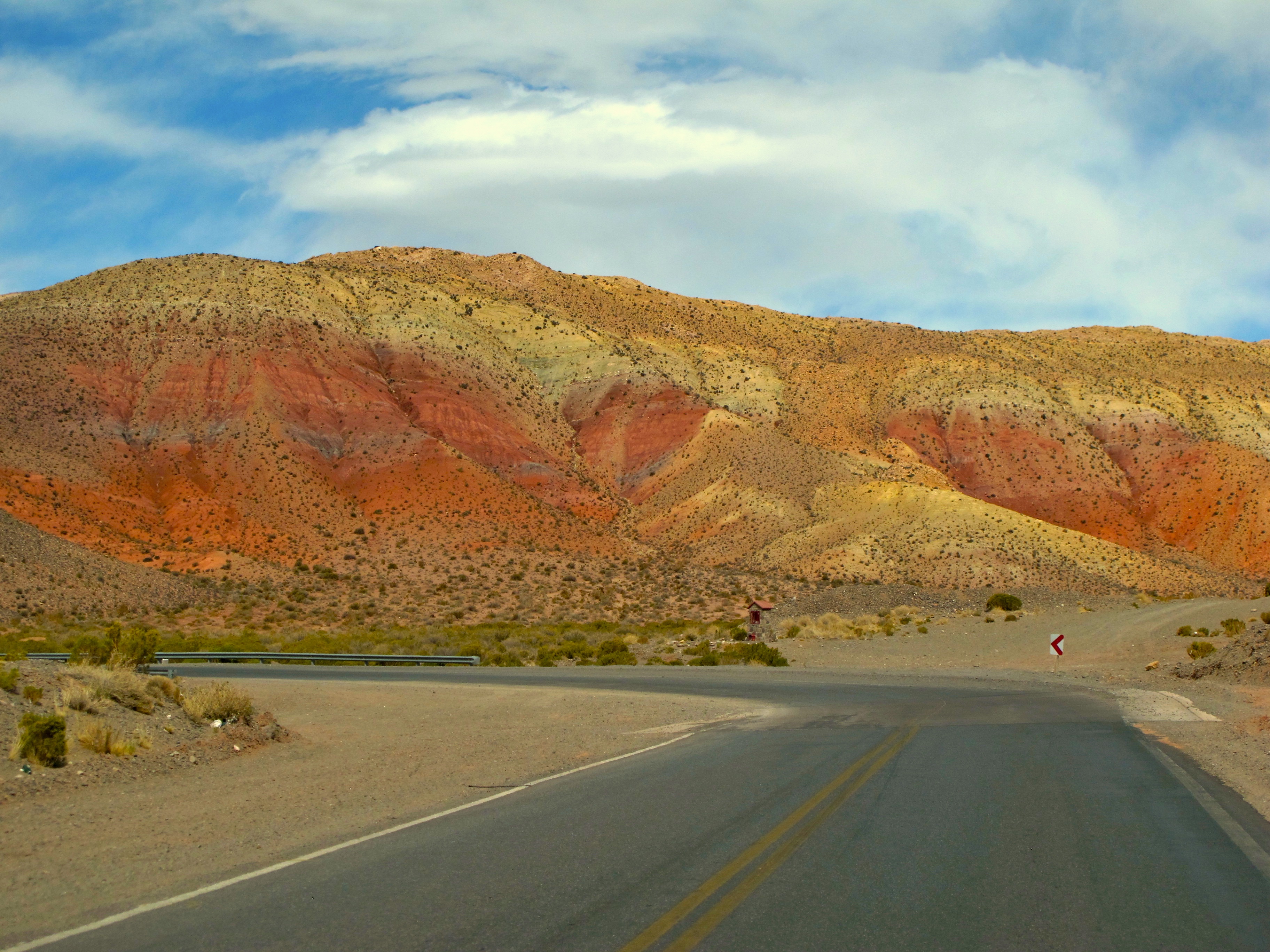
Adventurouspirits
Still desert, quite stark and dotted with colourful, large salt flats with tourists but covered with a thin layer of brown dust so not quite as white as the Salar de Uyuni. We drove down the mountain pass dropping nearly 10,000 ft, loosing count of the number of switchbacks. Stunning scenery, wild with colour we arrived in the valley and oasis of the little town of Purmamarca.
Enlarge
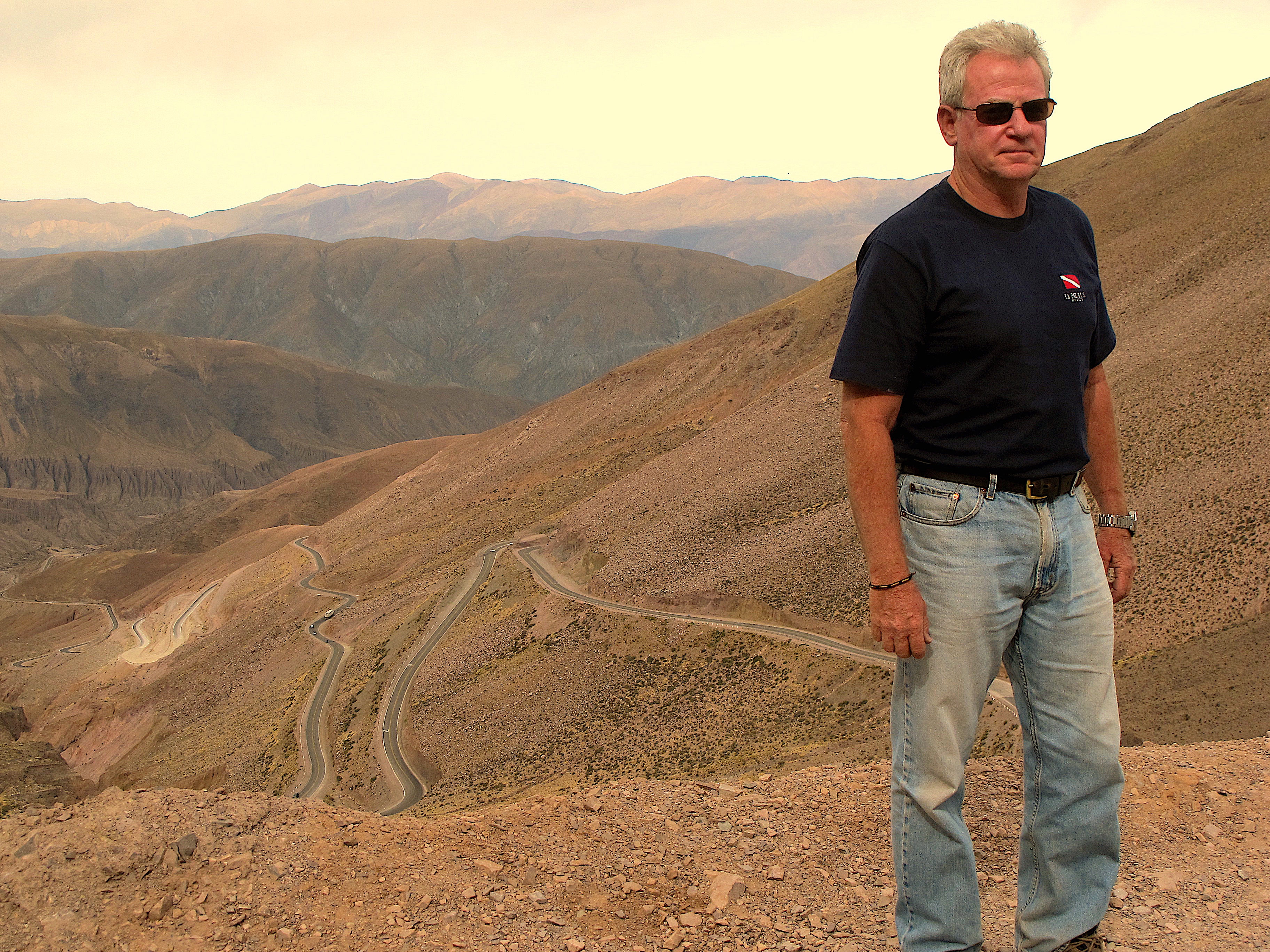
Adventurouspirits
We set up camp and went off to explore Purmamarca, which is located beneath the Hills of Seven Colours.
Enlarge
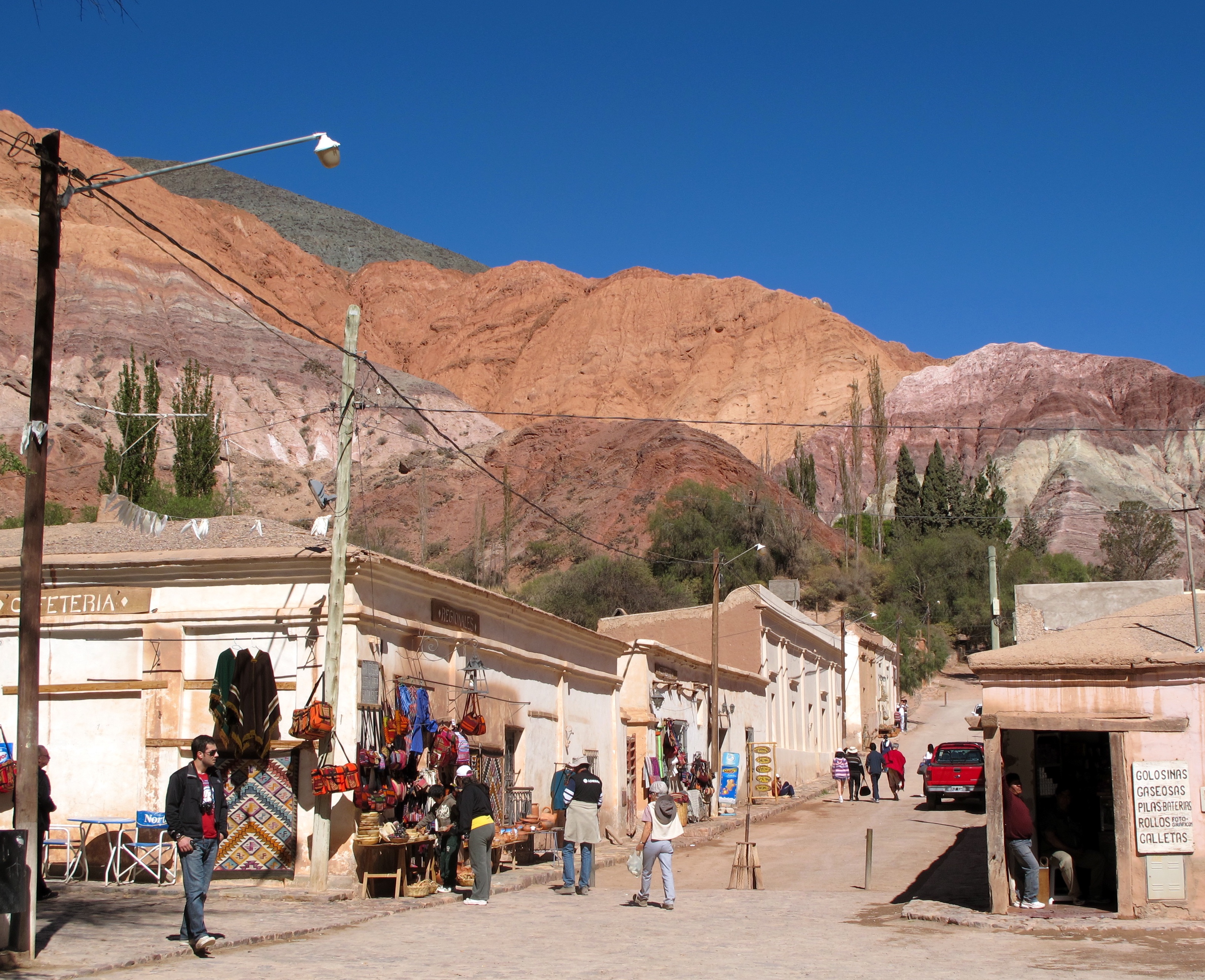
Adventurouspirits
Enlarge
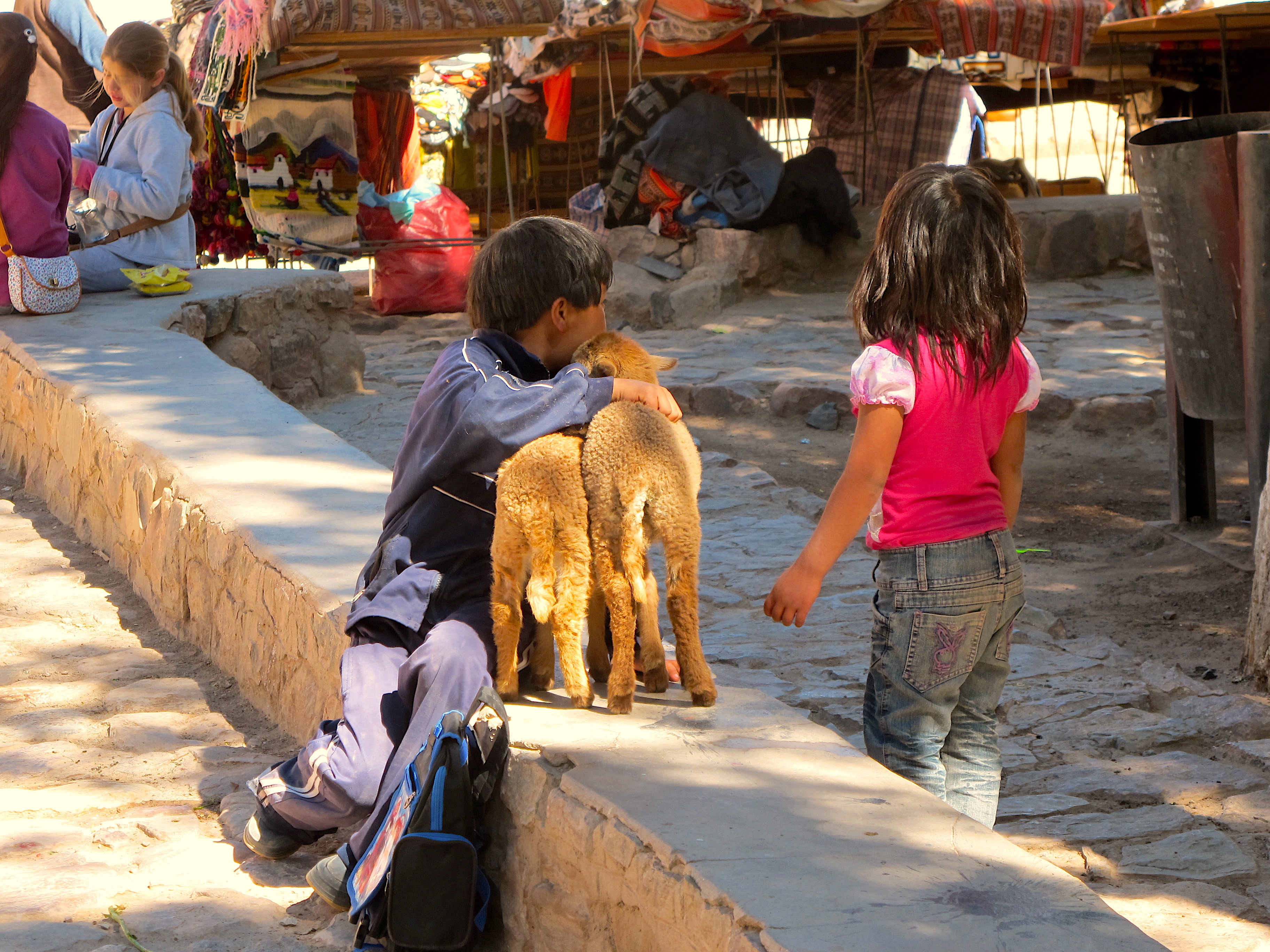
Adventurouspirits
We heard singing coming from the little church and entered to discover a choir concert in progress. We settled down to enjoy the magic of music sung by the locals, a pleasant evening after a long day of driving.
Enlarge
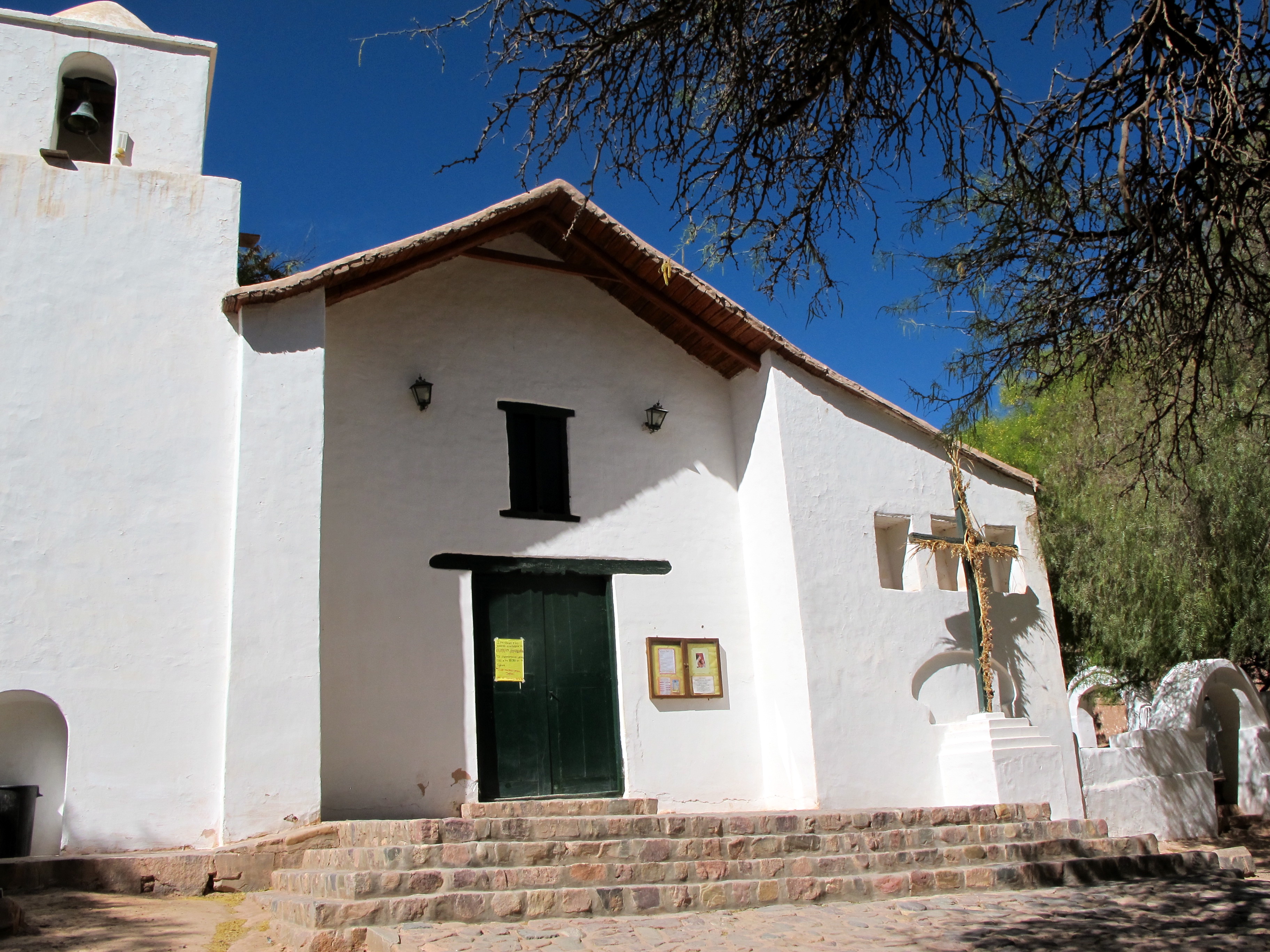
Adventurouspirits
Enlarge
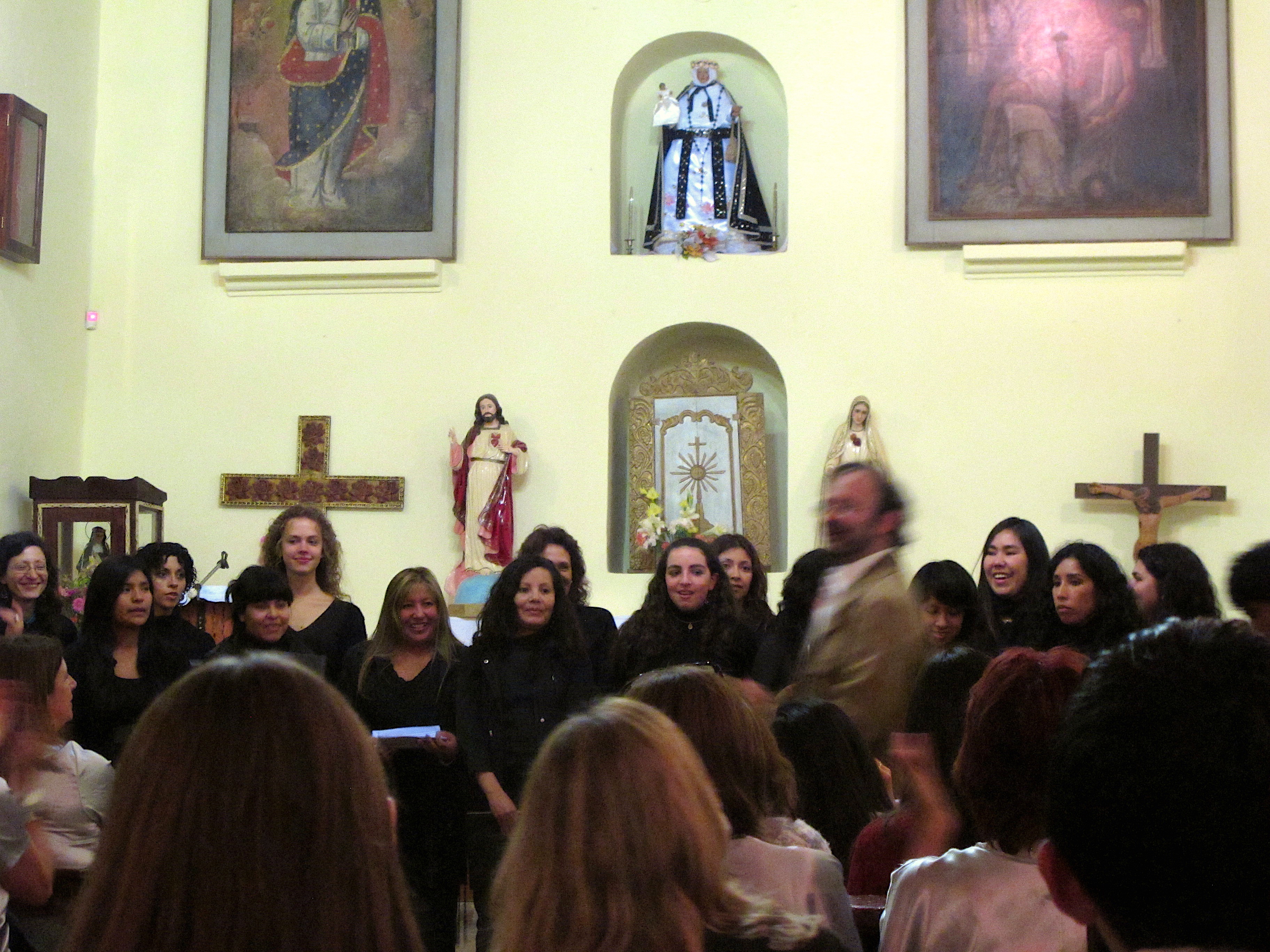
Adventurouspirits
The following morning we hiked into the hills and witnessed the dramatic colours of the hills.
Enlarge

Adventurouspirits
Enlarge

Adventurouspirits
Enlarge

Adventurouspirits
Next stop is Salta.
Enlarge

Adventurouspirits
On arrival decided to go grocery shopping before setting up camp. Tom navigated across the town to a smart location, where we found a real shopping mall with Seiko watches, Gucci bags etc and a wonderful selection of groceries. I love civilization! We had a nice cup of coffee and wandered around the aisles with our mouths open. Tom wanted to buy everything and I kept on reminding we have a little camper with not much space. So 2 toilets rolls are really better than a dozen I know they are soft and are 2 ply and does not get much better than that! After a “first world attack” we could not face going back to the grubby campsite, we were so desperate for a real toilet, (has water and flushes), hot shower, no bugs, no dust or mud so we decide to stay at a hotel. Oh yes we could think of a 1000 justifications as to why we needed a hotel room for one night. It got better we went out for supper and I had a lovely pollo con naranja, (chicken in orange) and 2 glasses of wine I thought “This is such fancy living.”
The following morning after a decadent night while getting into our truck to head for the campsite, a local named Oscar approached us. He told us he had worked in Canada and Libya and was surprised to see a Canadian registered truck. He also owned a hotel in Salta. Our ears picked up and the questions followed. “Do you have a parking lot, would our truck fit in, can we camp in your parking lot”. Yes, yes, yes and all for free. He was so generous and friendly and we spent a lovely time exploring Salta and chatting to Oscar over breakfast.
Enlarge

Adventurouspirits
It was still 1,400km to Iguazú Falls. Crossing Northern Argentina an endless plain called the Grand Chaco, we drove 700km the road so flat and straight we did not have to move the steering wheel, and passed some of the largest cattle feed lots we had ever seen.
Enlarge
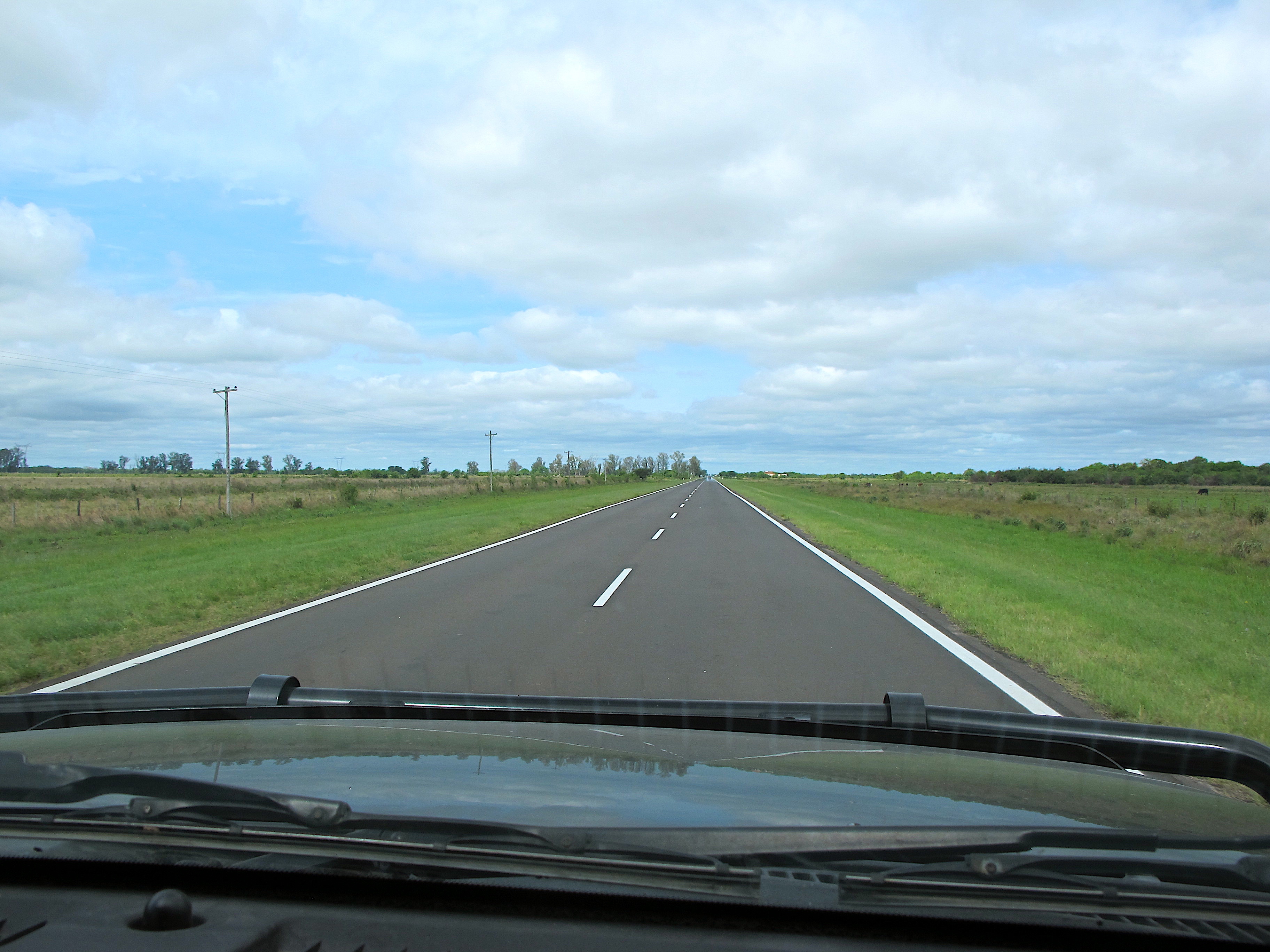
Adventurouspirits
A dusty little frontier like town with long name “Presidencia Roque Sáenz Peña” had us booking into their spa for a facial and a soak in a thermal bath. Who would have thought in the middle of the Chaco region of Argentina, a spa?Resistencia dusty capital of Chaco with over 500 sculptures claims to be the artistic centre of North Argentina. Fernando a stray dog who inspired the town’s people with his carefree and delightful personality during the early 1960’s is honoured with his statue in the central plaza.
Enlarge

Adventurouspirits
On route to Iguazú Falls, we stopped to visit the Jesuit Mission San Ignacio Mini. The priests of the Society of Jesus, more commonly known as Jesuits developed the series of missions in Argentina, Brazil, Bolivia, Uruguay and Paraguay in the early 1600’s. Expelled in 1768 by the Spanish government, for not supporting Spain territorial ambitions and slavery, they were forced to abandon the missions. The Jesuits evangelized the local people known as the Guarani in Argentina. The Jesuits provided the Guarani protection from slave traders, teaching them skills such as leatherwork, music, carpentry and stonework. In fact the intricate carving done by the Guarani is phenomenal; baroque art in the middle of the jungle. We wandered around the ruins, which once was home to over 4000 people.
Enlarge
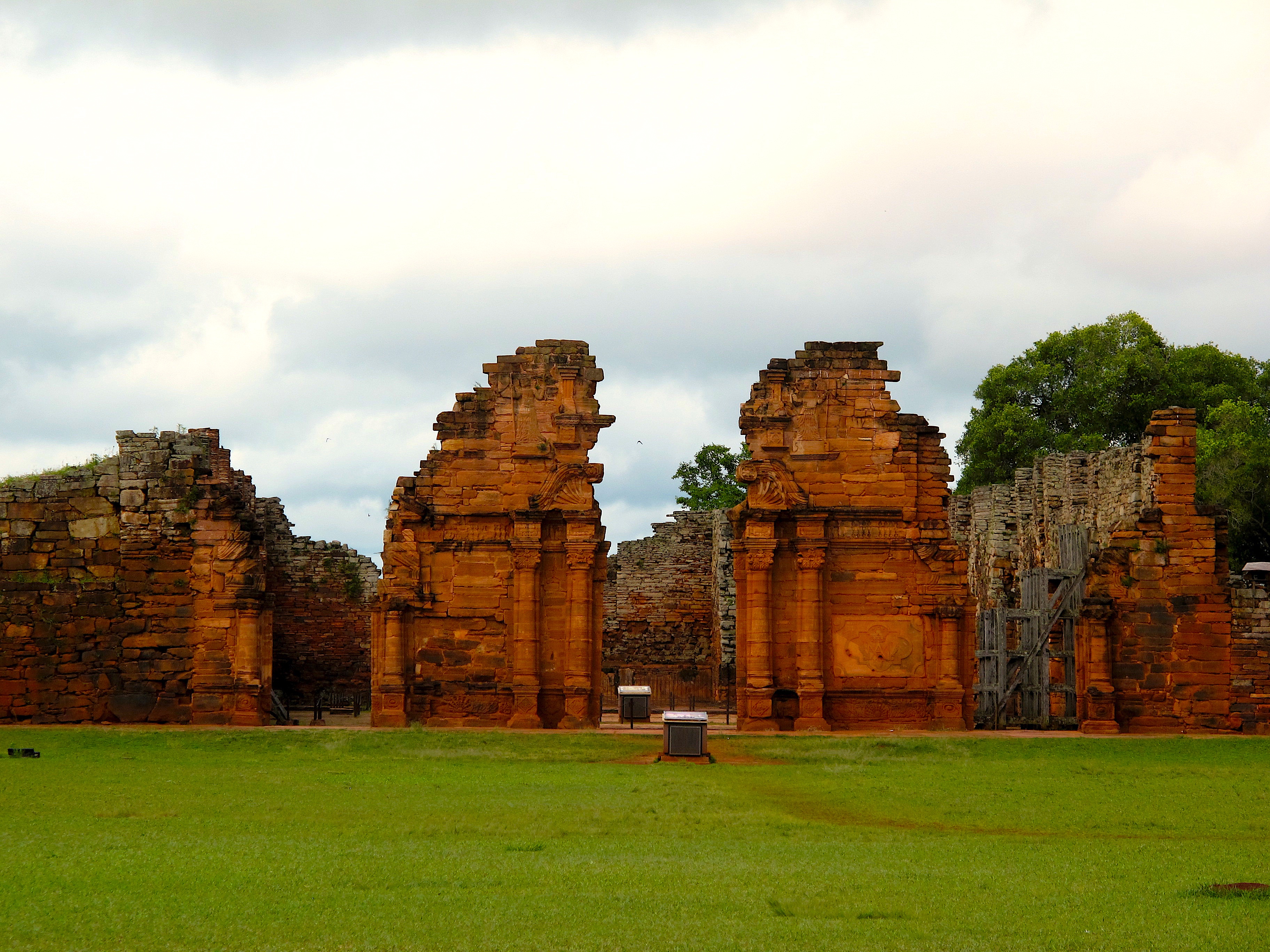
Adventurouspirits
Enlarge
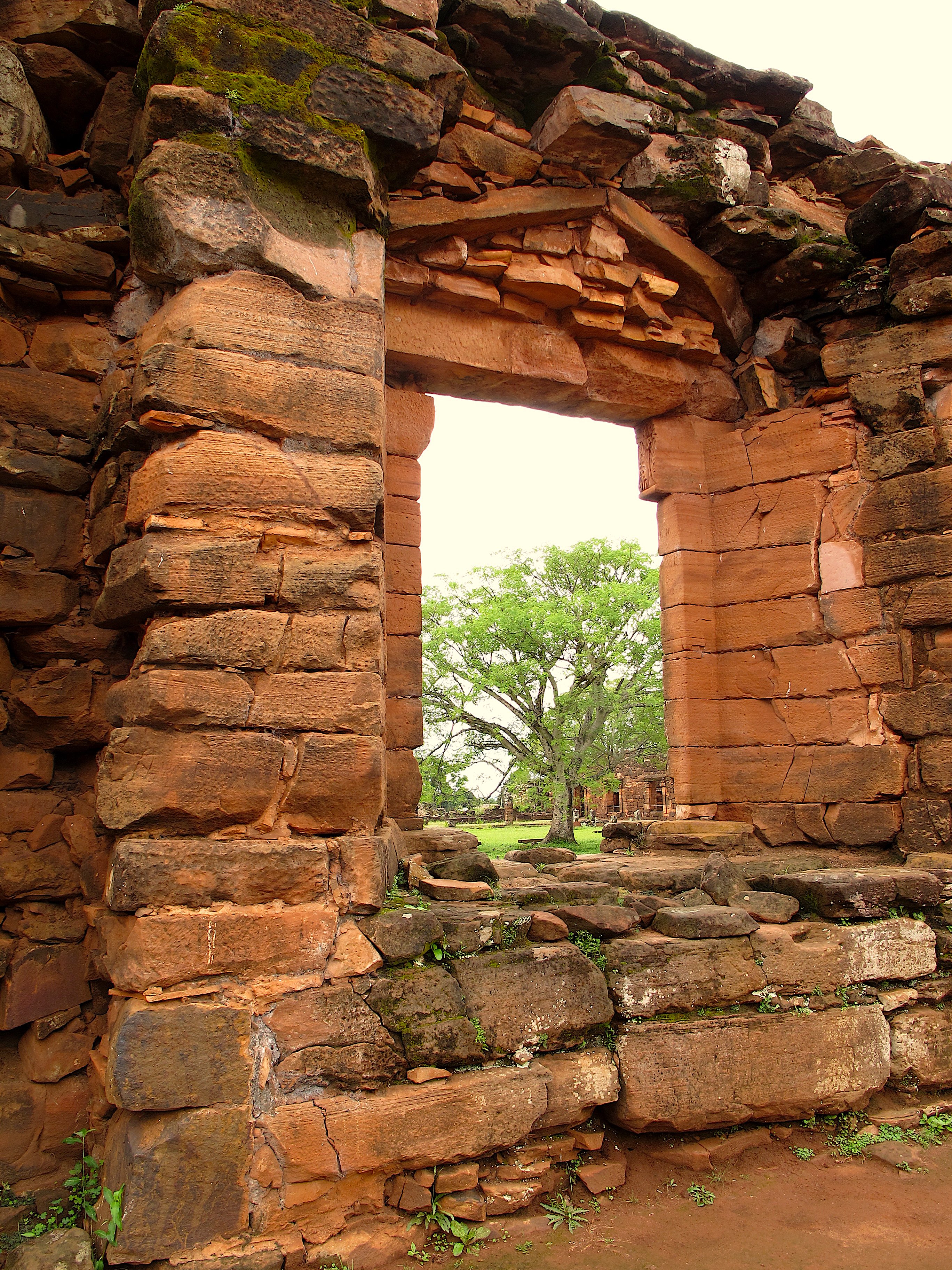
Adventurouspirits
Enlarge
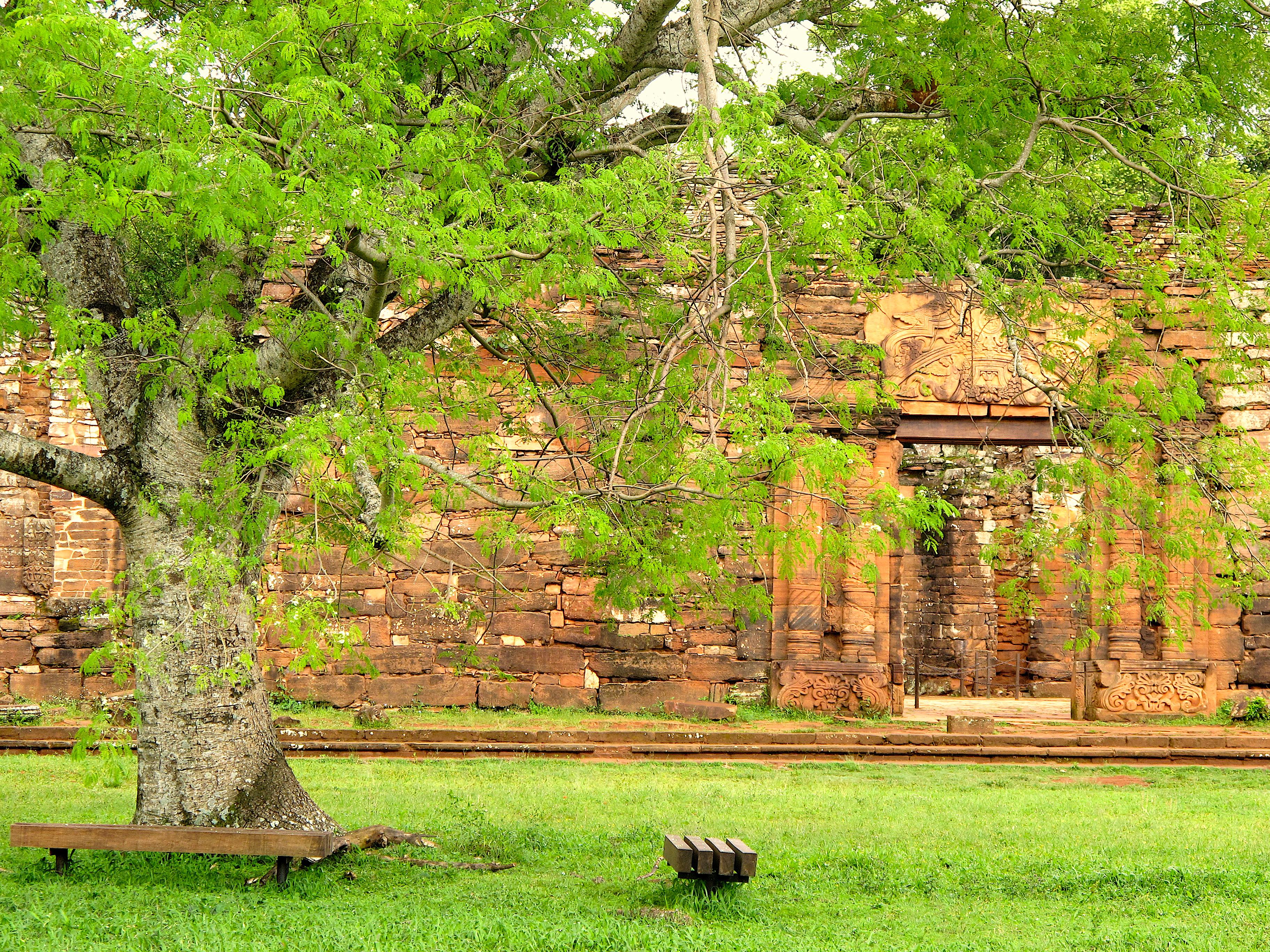
Adventurouspirits
Enlarge

Adventurouspirits
Later that evening in San Ignacio, we heard distant drumming and headed off towards the sounds. We arrived at a cross road and in the middle of the street under a bright street light were 30 youngsters playing a variety of percussion instruments and playing with their hearts and souls. Were they the decedents of the Guarani people once taught to play such music by the Jesuit missions? We stood and felt our souls beat to the rhythm of the music it was astounding.
Enlarge
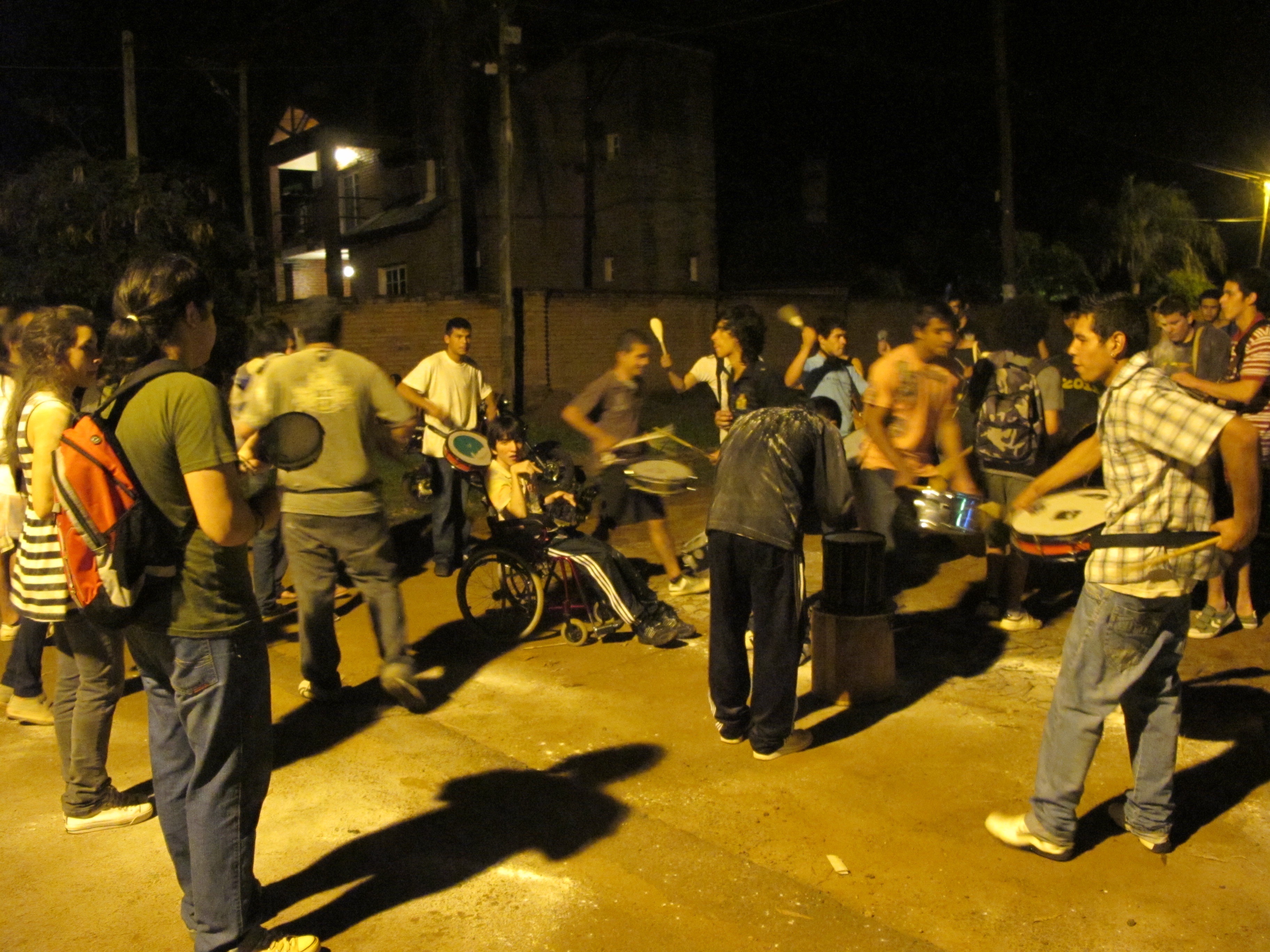
Adventurouspirits
The world-renowned Iguazú Falls are only 18 kilometres (11 mi) away from the city of Puerto Iguazu. The Rio Iguazú separates Argentina and Brazil and the falls can be viewed from both Brazil and Argentina. After the river plunges over the falls, it drains into the Paraná River and the junction of these two rivers marks the border between Brazil, Argentina, and Paraguay. We stood on the shores of the town Puerto Iguazú and gazed across to Brazil and Paraguay.
Enlarge
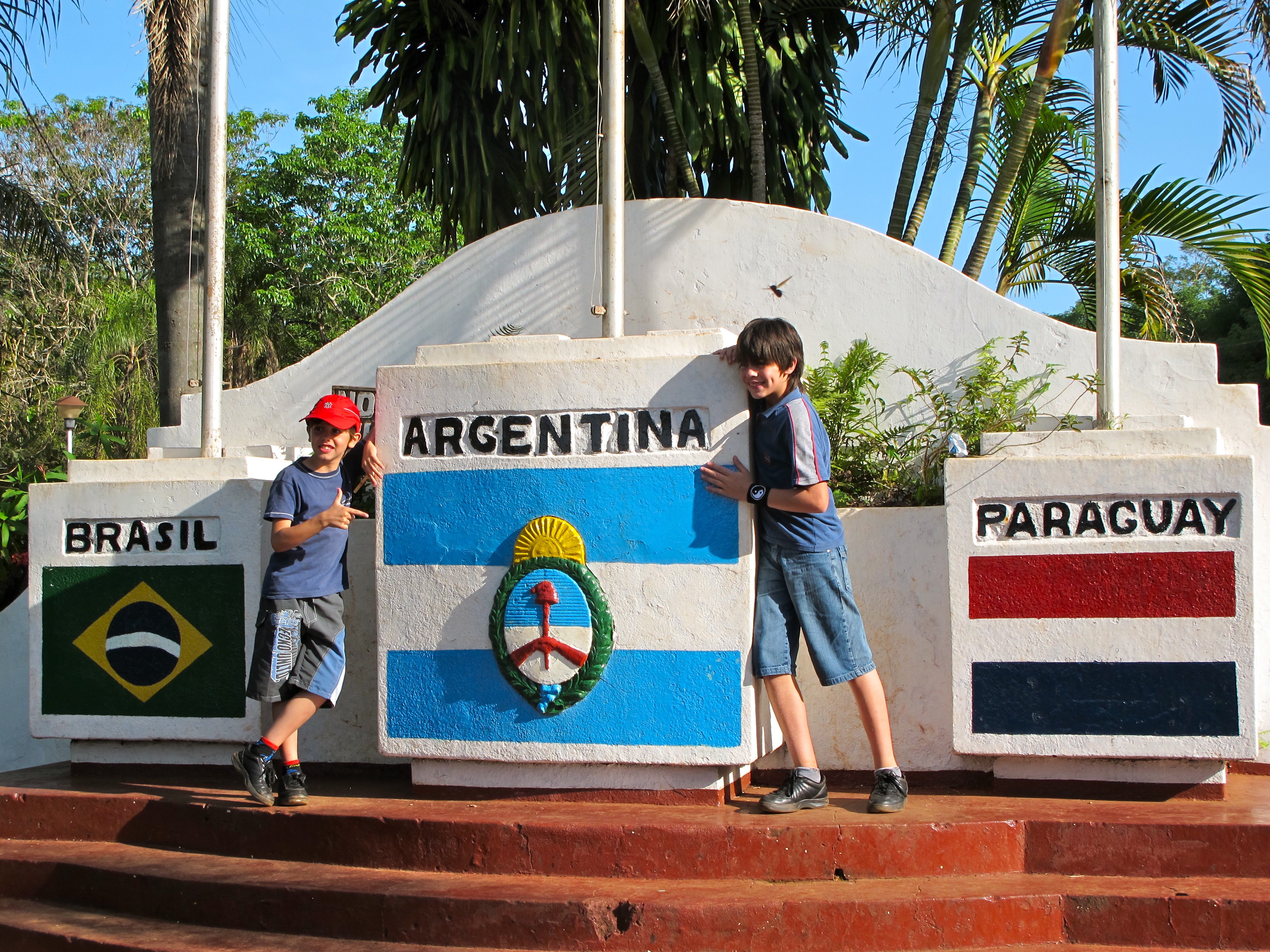
Adventurouspirits
Enlarge
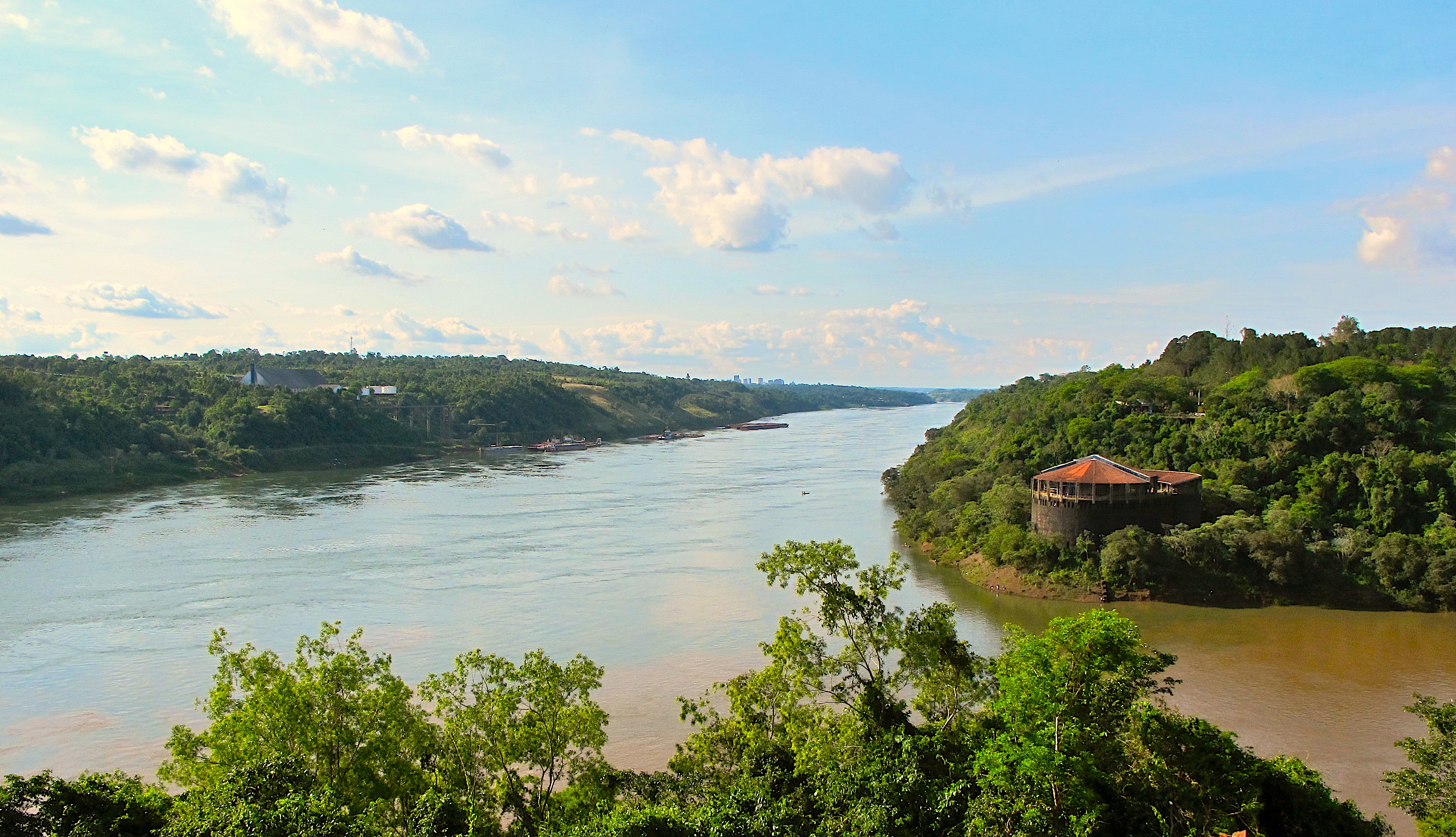
Adventurouspirits
We both uttered, “Wow” at our first sight of Iguazú Falls from the Argentina side. The power of the water, the noise of the torrent of water plunging over 275 separate waterfalls and cataracts stretching about 2km is a remarkable sight. Once again, we were in awe of the power of nature. Half of the water falls into a U shaped narrow chasm called Garganta del Diablo (Devil’s Throat) and the platforms takes one out almost over the falls and soaking us in spray from the 82m high, 150m wide and over 700m long torrent of smashing water. The mist rose high into the sky and rainbows cast their colours across the scene.
Enlarge
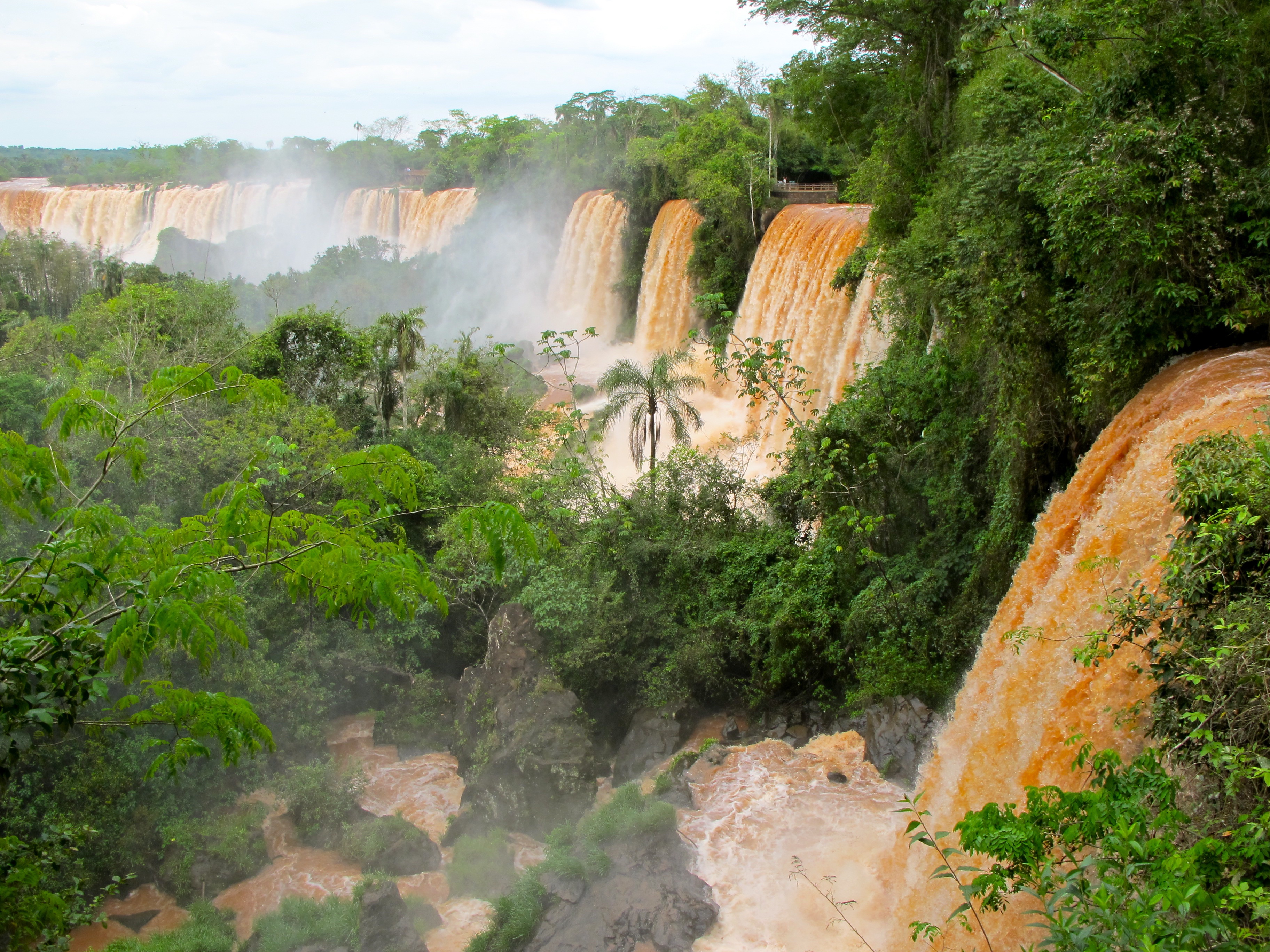
Adventurouspirits
Enlarge

Adventurouspirits
Enlarge

Adventurouspirits
We spent 6 hours exploring the falls via a series of trails and bridges. Trails through the jungle and then bridges crossing the falls and raging river. We lucked out with clear sunny skies creating rainbows in the spray of the mists. The falls were in flood adding to the power and the splendour and adding to the almost red colour with sediment. The red colour is sediment which comes from topsoil upriver. This is not a good sign and is a result of the extensive deforestation due to legal and illegal logging.
At our lunch stop we watched as a lizard shedded his old skin for a brand new one.
Enlarge

Adventurouspirits
The bird life in the trees is wonderful.
Enlarge
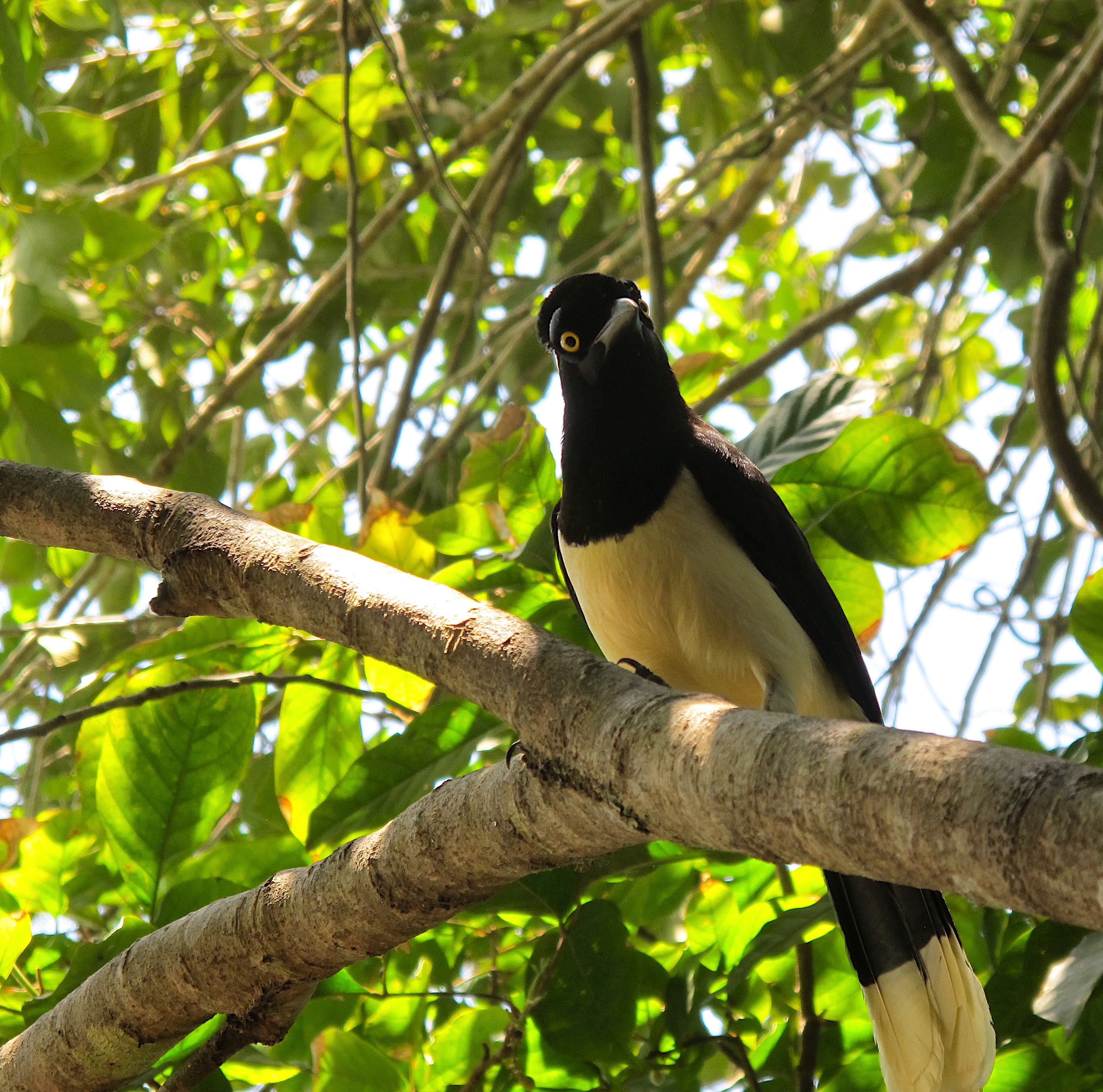
Adventurouspirits
Enlarge

Advebnturouspirits
Garganta del Diablo, (Spanish: Devil’s Gorge or Devil’s Throat), is a spectacular cataract on the Río Iguazú at the border of Argentina and Brazil. The water roars down a descent of 269 feet (82 metres).
Enlarge

Adventurouspirits
Enlarge
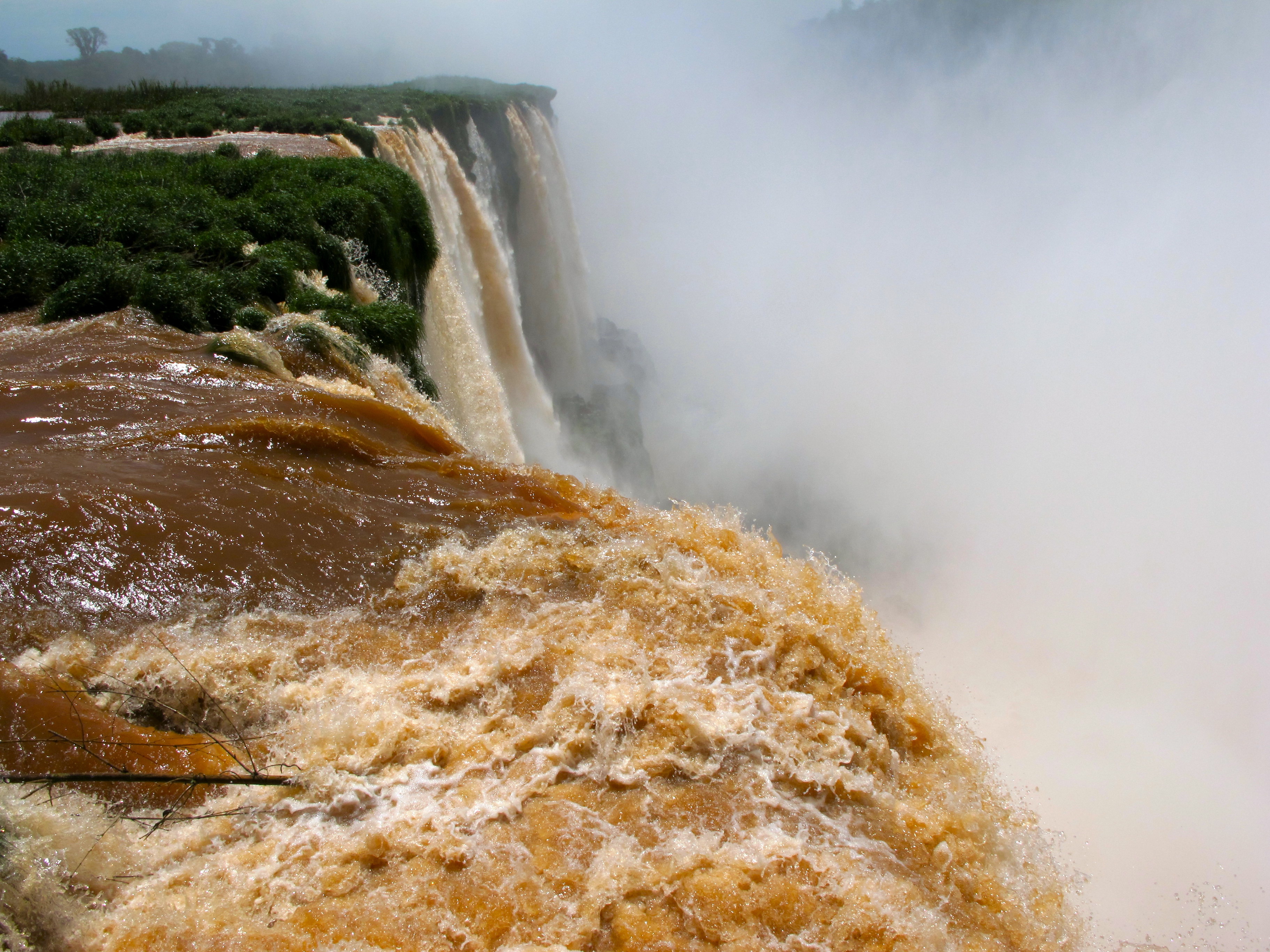
Adventurouspirits
As Canadians, we need to apply for visas to visit either Brazil or Paraguay. We looked across to Brazil and wondered whether our application for a visa would be approved.
Despite the Brazilian bureaucratic visa application process, we were warmly welcomed at the consulate. The official was helpful and stressed to us the importance of getting all the correct documentation within the required time limits. We needed passport photos, to complete the application on-line and print off a copy of our bank statements and all that needed to be submitted by 1059 hrs in order to get our passports back the following day. We hurried to the local internet café and back to the consulate with all the required documentation and payment. The following day at 1200 hours, we received our fancy looking visa, which the official proudly showed us. The Brazil visa can only be matched by our fancy Congo or almost impossibly difficult to get Angola visas.
Enlarge
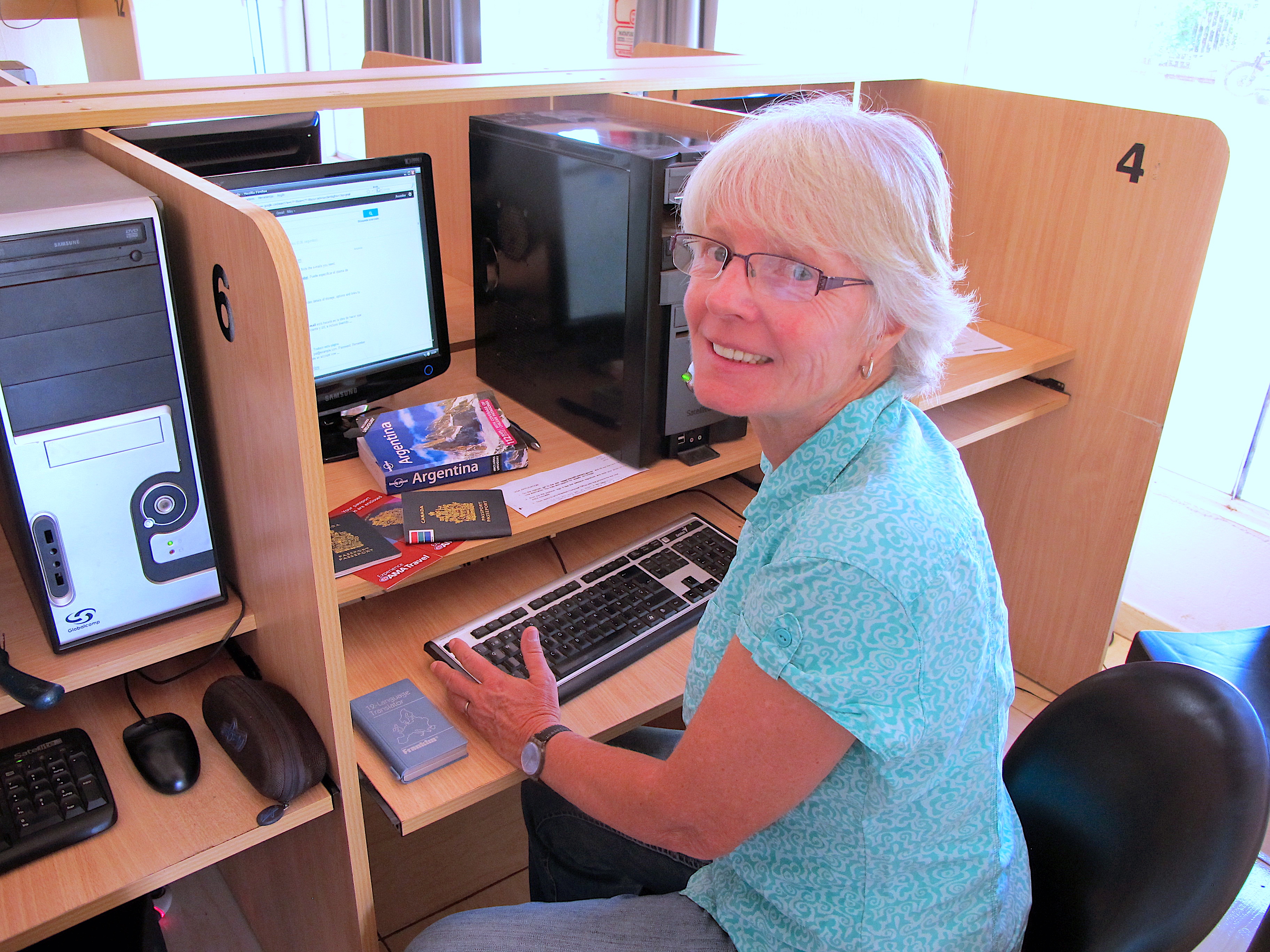
Adventurouspirits
Enlarge

Adventurouspirits
Enlarge

Adventurouspirits
We crossed the River Iguaçu over the Bridge Ponte Tancredo Neves and into Brazil from Argentina. We set off to visit Itaipu Dam the world’s largest hydroelectric dam, 8km long and 65 stories high spanning across both Paraguay and Brazil. The large Itaipu Lake is now surrounded by 100’s of high power substations and wires, replacing the trees and birds.We boarded the visitor tour bus at the dam. Stopping for photo opportunities and across the dam wall traveling to Paraguay and back into Brazil (3 countries in less than 4 hours!) The guide explained the history of the building of the dam in English, but the dam is not without its critics. In damming the Rio Parana, it is estimated 700 sq km of forest was destroyed, several communities relocated and several species of plants are now extinct. Green energy is not without costs.
Enlarge
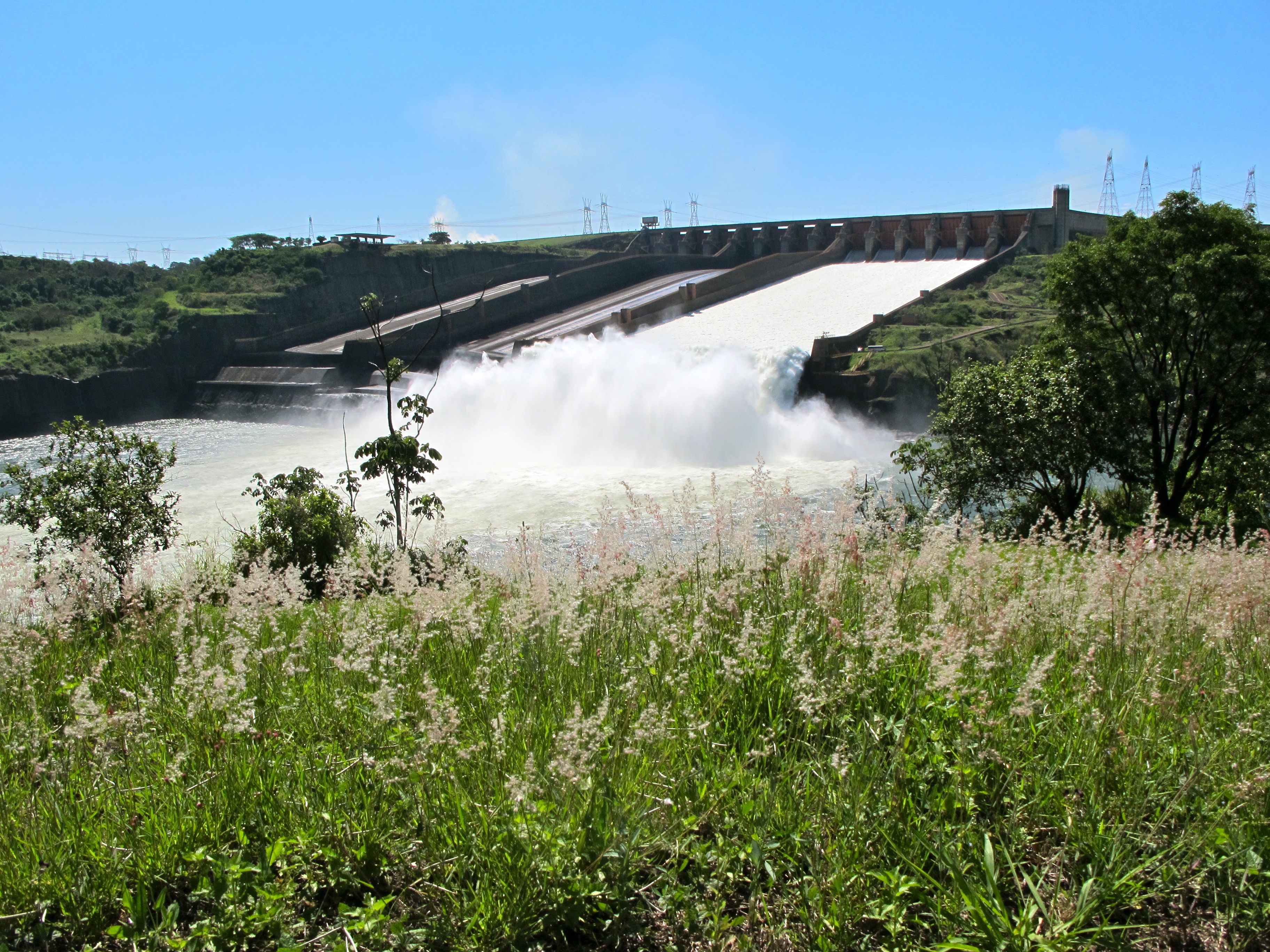
Adventurouspirits
Enlarge

Adventurouspirits
The following morning in Foz de Iguaçu, bright and early on yet another sunny day we set off to view the Iguaçu Falls from the Brazil side. They not only do they share the world’s largest dam with Paraguay they share the world’s most stunning waterfall with Argentina. The view from Brazil is more panoramic, and with the morning sun shining through the spray the view was filled with rainbows, spectacular! We put on our bright yellow rain jackets and headed down the walkway into countless rainbows in the spray.
Enlarge
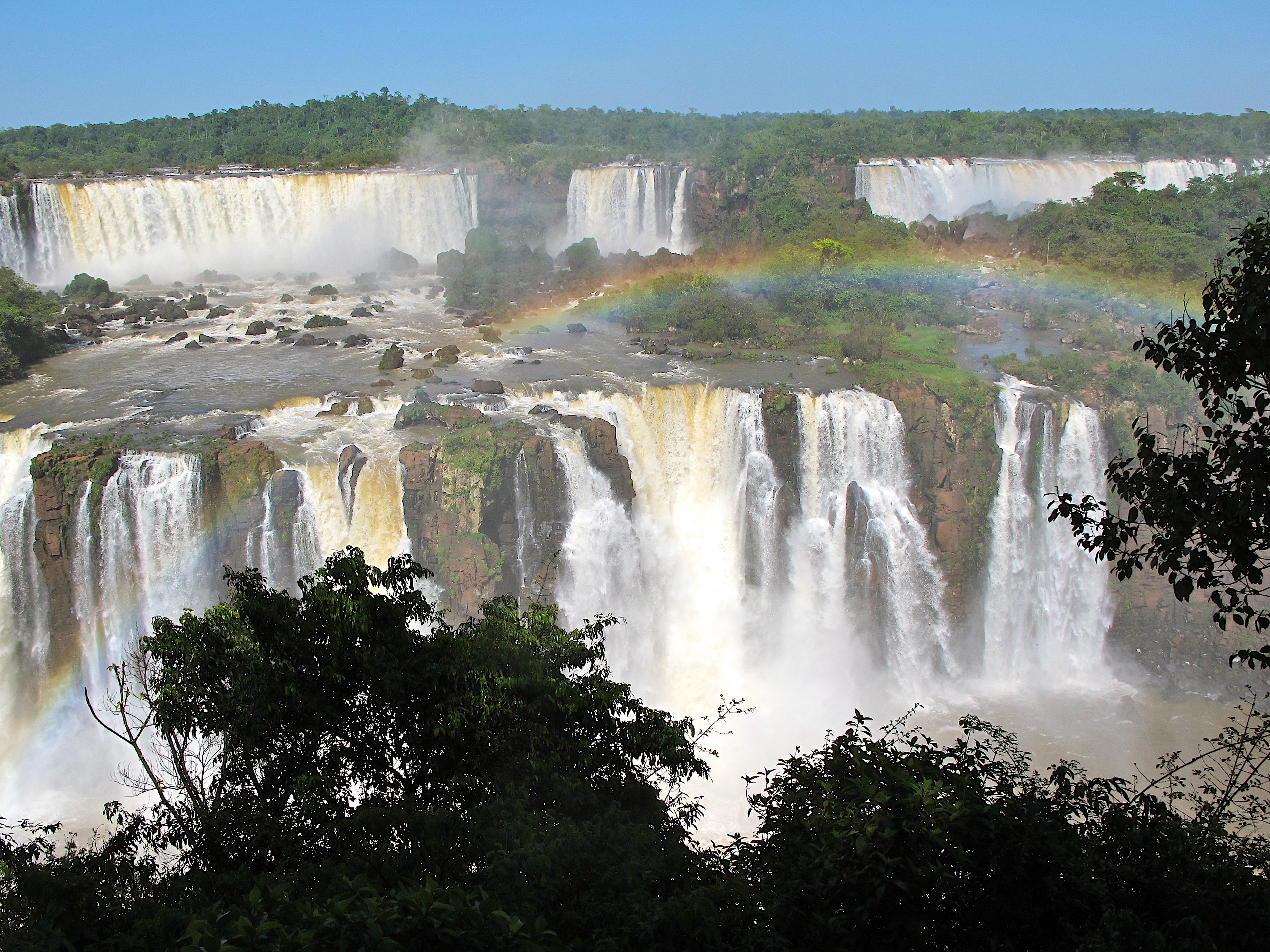
Adventurouspirits
Enlarge
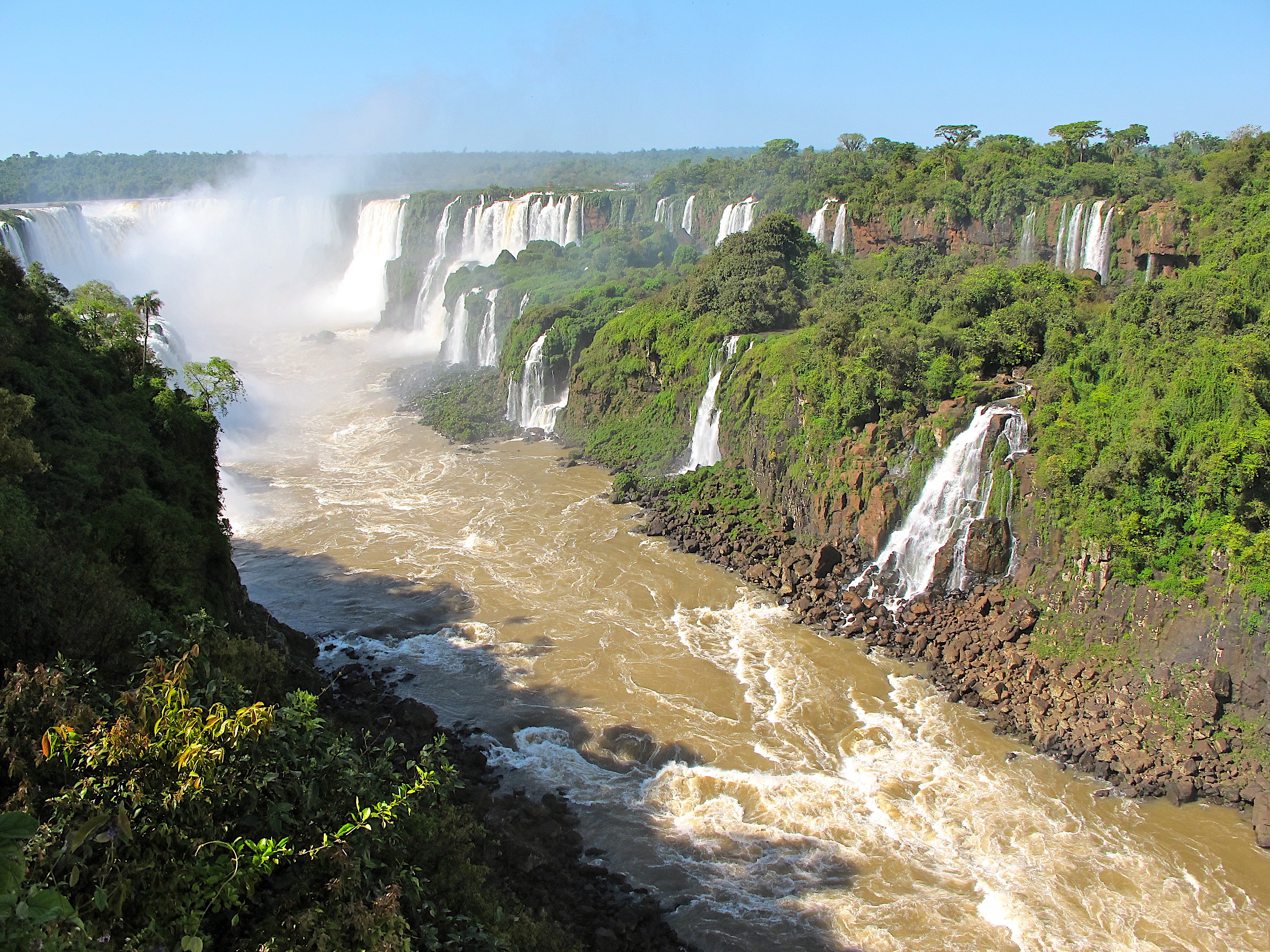
Adventurouspirits
Enlarge

Adventurouspirits
Enlarge
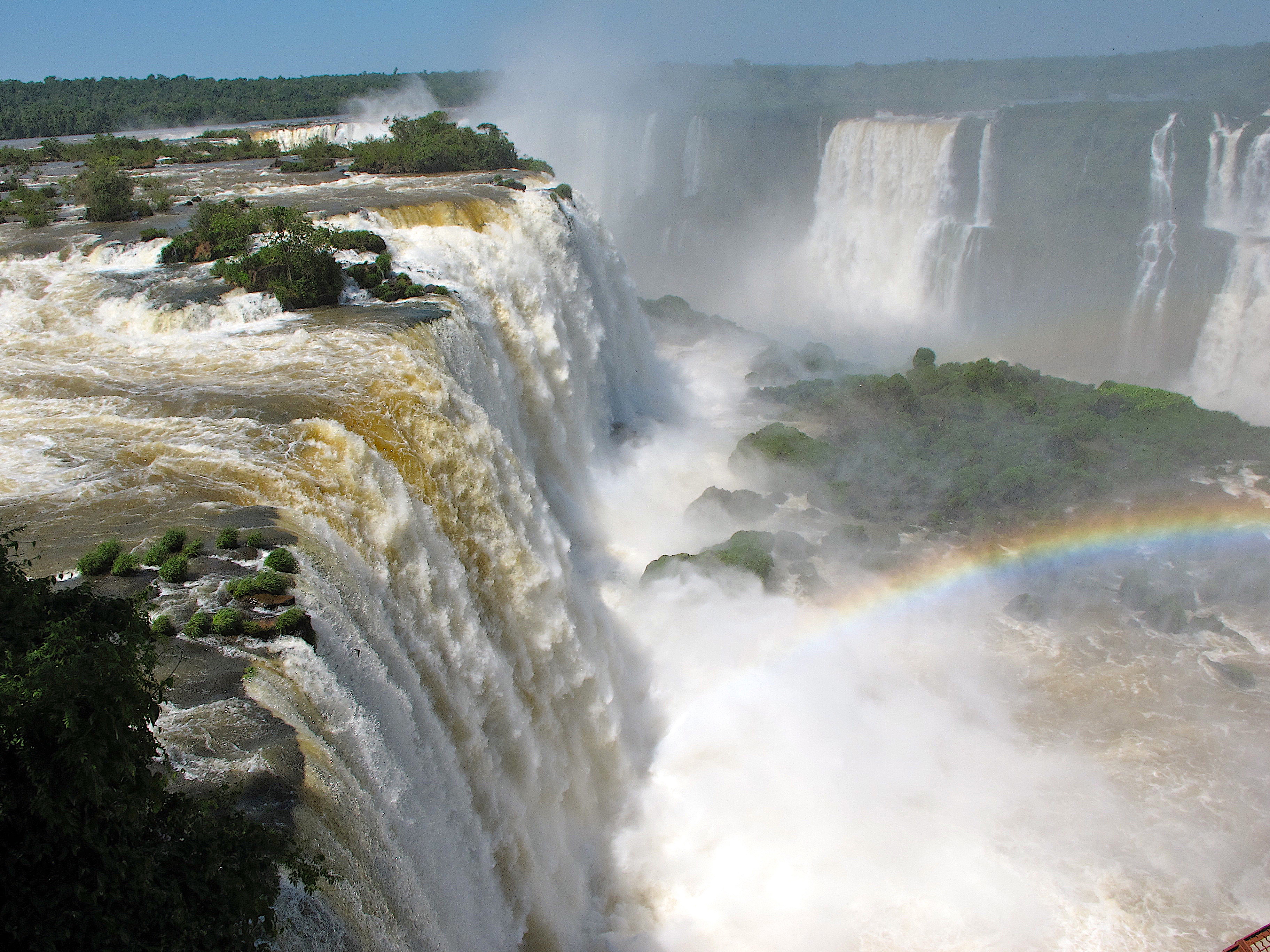
Adventurouspirits
We once again turned south driving through Argentina to Uruguay the smallest Spanish speaking country in South America. It is just over a ¼ the size of Alberta. We stopped to camp in Yapeyu a little town located on the River Uruguay still in Argentina and met a delightful couple from Australia, Bryan and Fran. We spent a great evening with them under the stars sharing travel stories. It is always such a treat to meet fellow travellers and make new friends on the road. Tomorrow we enter Uruguay.

We only know the Victoria falls in Zimbawe,some change what you saw.!!
Where will the next place be.?? no more Chile ?
Regards,
Heinz
The Victoria falls in Zimbabwe are still as fantastic as Iguazu and of course not as touristy and still somewhat wild
hi I’m tom marcelo met in the American camp asked for the tour I was with my friend the victor wanted to greet, congratulate beautiful life experiences to congratulate them again and I know someday I will copy his steps!
We are really enjoying reading your posts, specially now that you are ahead of us “scouting” 🙂
Many hugs.